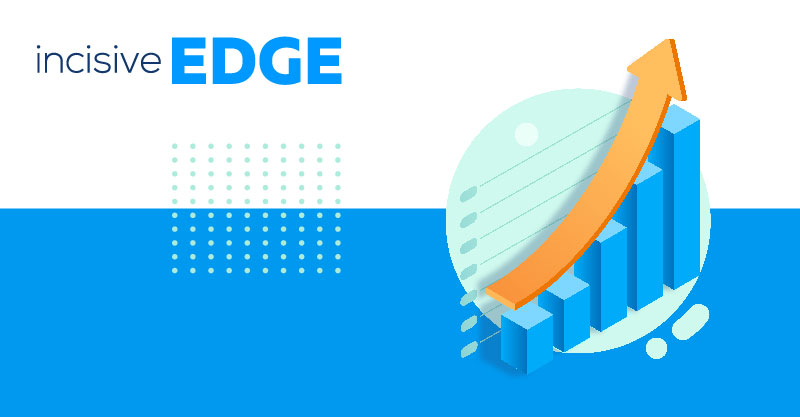The software as a service industry is as exciting as it is tough.In the realm of SaaS, daily challenges are a constant for SaaS owners, marketers, and customer success managers. Simultaneously, SaaS providers strive to deliver effective SaaS solutions and attract customers, shaping the intricate tapestry of this ever-evolving landscape.
Bringing such value to people’s lives, purely through your product is truly a hallmark of modern times. But the reality is, establishing yourself is a real challenge.
In fact, there are several - and below you’ll find the top 3 SaaS challenges plus solid advice from industry-leading experts - on how to overcome them and scale your business successfully.
Check out the following articles to learn more about Saas marketing:
- The Best Beginner's Guide to SaaS Lead Generation Today
- How to Innovate SaaS Marketing for 2023 and Beyond
- Go to Market Strategy for SaaS: Tips and Best Practice
- How to Convert SaaS Trial Users with Inbound Marketing
SaaS Challenge 1: Data analysis (especially those cohorts)
Data analysis can be demanding, particularly when you're under pressure to achieve financial stability. Your funding can't last forever, and if you're in London, Silicon Valley, or other regions where hiring top-notch SaaS professionals means offering competitive salaries, you need to generate those insights swiftly. This is where an adept saas provider, effective saas solution, and thriving saas businesses come into play.
What’s the most important type of data to scale a SaaS fast? The notoriously tricky cohort analysis.
As James Currier points out in this excellent talk, a frighteningly small number of SaaS industry professionals understand it. James also states that it’s the single most important skillset to scaling SaaS products fast.
As someone who’s helped many SaaS products grow to over 10 million users, you can bet he knows a thing or two about growth hacking.
How to overcome this challenge
You need to understand your data and you need to focus on what’s important so you can scale fast. Cohort analysis is critical.
One SaaS investor, Christoph Yanz, created a cohort analysis spreadsheet template that makes wrapping your head around this field of data analysis relatively easy. It’s an incredible tool for learning how this works.
You can download the spreadsheet here and read Yanz’ thoughts on it here. Simply fill in the yellow fields and have the spreadsheet calculator everything else for you accordingly.
As Yanz states in the post:
“Cohort analyses are also essential if you operate a SaaS business and want to know how you’re doing in terms of churn, customer lifetime and customer lifetime value…And yet, many founders are still having difficulties with cohort analyses, be it with the collection of the data or the interpretation of the results.”
There’s no easy way around it. And yes, it will take a little time, study and practice. But, as any successful SaaS professional will attest, spending time learning these things helps you gain serious traction when scaling your business.
SaaS Challenge 2: User onboarding
Arguably, the second-largest challenge faced by a SaaS company is successfully onboarding new users, saas customers, to avoid product abandonment in trial periods and churn while also safeguarding customer data
Onboarding can be broken down into several smaller challenges, not least of which is knowing at what stage you should start investing capital in the onboarding process in the first place.
One survey conducted by Preact found that user onboarding was the single biggest reason for users churning.
- Will this new user really get the value my product offers them?
- Will they work out how to receive that value from my user interface fast?
- What is the “Aha!” moment of my product when these two things come together?
Answering these questions will lead you the answers you need for successful onboarding.
How to overcome this challenge
Let’s first deal with the issue of when to allocate those funds to onboarding.
One great piece of advice adopted by many SaaS owners was given by Dharmesh Shah, the CEO of user onboarding product, AppCues (and HubSpot). In an article published at onstartups.com, Shah states that startups should not focus on user onboarding in the beginning.
Coming from someone who promotes a user onboarding tool, that’s really saying something.
Instead, Shah says the best thing to do is to manually onboard users. Yes, this does mean a little overtime for you and/or your team. But by helping customers understand your product in person, you’re much more likely to:
- Gain invaluable, qualitative feedback that helps refine your product market fit
- Discover tricky points of your UI that need work and/or onboarding pattern to explain them
- Increase your customer lifetime value (LTV) by forming personal connections that can generate referrals
- Improve customer success and upsell higher price plans
The tech industry moves fast and, in spite of onboarding being a nascent field, there are already some truly excellent resources such as:
Samuel Hulick’s useronboard.com
This site offers comprehensive breakdowns of some of the most established SaaS products currently available. Additionally, it showcases Hulick's highly successful book within the industry. Furthermore, the platform explores key concepts like cloud-based services, ensuring a seamless integration experience, and the world of SaaS apps. Together, these elements provide a well-rounded and informative resource.
Lincoln Murphy’s sixteenventures.com
Lincoln Murphy’s excellent blog covers this all kinds of SaaS advice and the link above will bring you to his most popular 20 posts, at the top of which is his “Secrets to Successful Onboarding” article.
SaaS Challenge 3: Buyer personas & customer profiles
With so much to think about already, the nuanced task of developing buyer personas and customer profiles for your SaaS users is a heady proposition.
This becomes especially confusing when the terms are often used interchangeably, even though they’re two separate things.
And getting both right means better results from your marketing and onboarding, ultimately improving your sales, customer acquisition and customer retention.
Developing your personas is also critical for your company story which, as any good marketer will attest, is vital to engaging your audience in a way that leads to serious growth.
How to overcome this challenge
Let’s begin by differentiating the two clearly.
And to do that, let’s look to Tony Zambito, a thought leader on the subject and speaker at the B2B Content 2 Conversion Conference whose previous client list includes IBM, Hewlett-Packard and Symantec.
Zambito States that:
What should be evident is buyer profiles have a broader focus on buying factors and processes… On the other hand, buyer personas have chartered new territories into buyer insights, buying behaviors, goals, situational context, attitudinal mental modeling, and emotional as well as personal values.
If you’re reading this article, there’s a good chance you have already launched your SaaS product. You’ve at least set the wheels in motion or you may already be established and looking to scale.
Whichever stage of growth you’re currently at, creating solid, detailed customer profiles and buyer personas should be high on your list of your priorities. When you’ve crafted your profiles and personas, you can use them as a basis for decisions such as:
- The best tone of language to use in your onboarding copy and product
- Selling points, pain points and objections in marketing material
- Pricing plan tiers and other aspects of your product
Developing a solid customer profile is arguably easier than creating a buyer persona. Whereas the former is the kind of data you’d pull from your CRM, the latter requires a bit more creative thinking.
Your Personas
- Begin with your own data and see what stands out
- Spend time on social media noting common ground in interests, values and habits of your prospects or ideal customers
- If targeting a particular industry, look at their job descriptions and company “About Us” pages
- Check your personas with other teams to see what they think and ask for external input
- Test your assumptions by conducting market research interviews with ideal customers
This last point is incredibly effective. Because, by setting up interviews with a couple of dozen individuals from your target market, you can test your assumptions and find out just how right (or how wrong) your personas are.
This helps drive these insights home and solidify the persona in a way that can’t be done through other methods.
When you get these areas right, you start to see serious results across the board.
Conclusion
The SaaS industry has more than its fair share of challenges. You’re trying to break into, scale or in some cases even create a market that doesn’t currently exist.
There is competition, complex strategies to get right and a constant race against the clock. But, if you put in the extra hours and deepen your understanding of the foundations such as cohort analysis, killer user onboarding experiences and effective buyer personas, you can start with Incisive Edge to gain serious headway. Just ask one of our SaaS clients.










